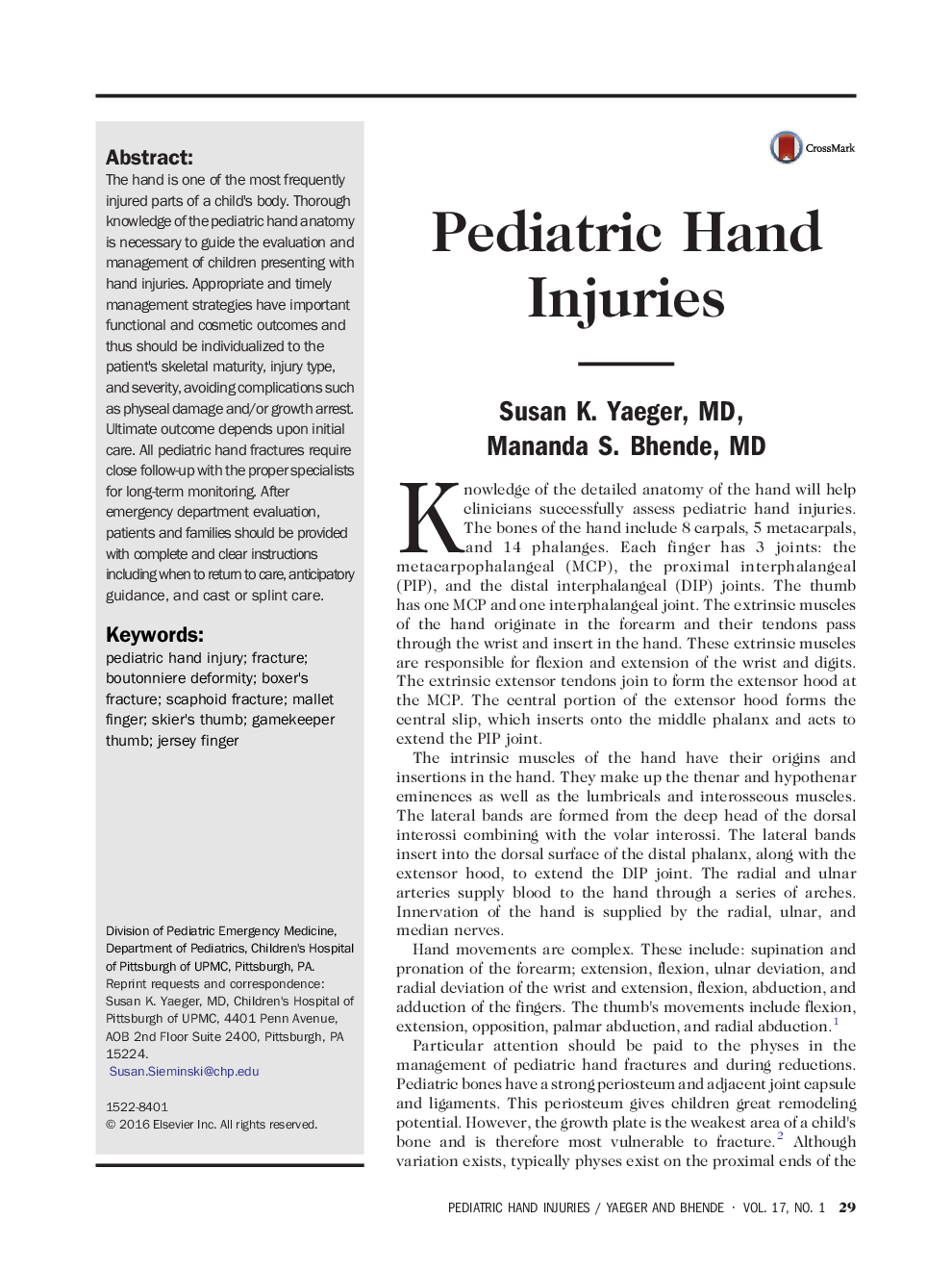| Article ID | Journal | Published Year | Pages | File Type |
|---|---|---|---|---|
| 3235769 | Clinical Pediatric Emergency Medicine | 2016 | 9 Pages |
The hand is one of the most frequently injured parts of a child's body. Thorough knowledge of the pediatric hand anatomy is necessary to guide the evaluation and management of children presenting with hand injuries. Appropriate and timely management strategies have important functional and cosmetic outcomes and thus should be individualized to the patient's skeletal maturity, injury type, and severity, avoiding complications such as physeal damage and/or growth arrest. Ultimate outcome depends upon initial care. All pediatric hand fractures require close follow-up with the proper specialists for long-term monitoring. After emergency department evaluation, patients and families should be provided with complete and clear instructions including when to return to care, anticipatory guidance, and cast or splint care.
